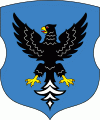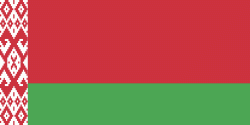Mazyr
 |
Jews were first mentioned in chronicles in the second half of the 17th century. It is known that there were three synagogues in the city as of 1856. R. Kugel, a prominent Jewish community figure, had been the chief Rabbi of Mazyr since 1861. He was also the head of the local Jewish literacy school.
During this period Jews were mostly engaged in craftsmanship and trading. Part of Mazyr's industry, the match factory and the wood sawing factory were owned by Jews.
There were eight active synagogues, a yeshiva, Jewish school and Talmud-Torah school in the wake of the 20th century. All of the facilities had been closed down by 1939.
Thousands of Jews were executed by the Nazis in the local ghetto during World War II. After the mass execution, almost no Jews remained in the city, whereas before the war 30% of the population within the city was Jewish. On August 31, 1941, hundreds of Jews gathered inside a house at Malo-Pushkin street. They poured kerosene on the building walls and set it alight, while the people huddled inside. The mass suicide was an attempt to escape execution by the Nazis. The incident is known as the "Belarusian Masada".
After the war some Jews returned to Mazyr. Although they refused to take back the partially-destroyed synagogue building, an official Jewish community was registered in 1946. A few years later, authorities denied the organization's right to exist. The community organization was re-established officially in 1989, when a revival began in the city. A synagogue and a Jewish culture club were opened.
Map - Mazyr
Map
Country - Belarus
 |
 |
| Flag of Belarus | |
Until the 20th century, different states at various times controlled the lands of modern-day Belarus, including Kievan Rus', the Principality of Polotsk, the Grand Duchy of Lithuania, the Polish–Lithuanian Commonwealth, and the Russian Empire. In the aftermath of the Russian Revolution in 1917, different states arose competing for legitimacy amid the Civil War, ultimately ending in the rise of the Byelorussian SSR, which became a founding constituent republic of the Soviet Union in 1922. After the Polish-Soviet War, Belarus lost almost half of its territory to Poland. Much of the borders of Belarus took their modern shape in 1939, when some lands of the Second Polish Republic were reintegrated into it after the Soviet invasion of Poland, and were finalized after World War II. During World War II, military operations devastated Belarus, which lost about a quarter of its population and half of its economic resources. The republic was redeveloped in the post-war years. In 1945, the Byelorussian SSR became a founding member of the United Nations, along with the Soviet Union.
Currency / Language
| ISO | Currency | Symbol | Significant figures |
|---|---|---|---|
| BYN | Belarusian ruble | Br | 2 |
| ISO | Language |
|---|---|
| BE | Belarusian language |
| RU | Russian language |















